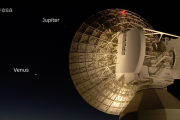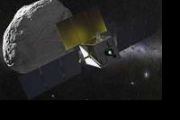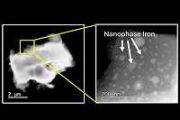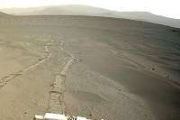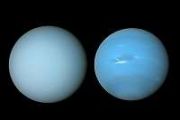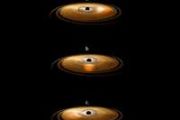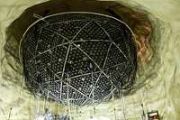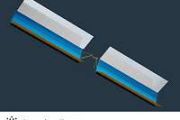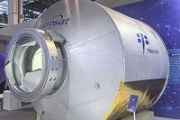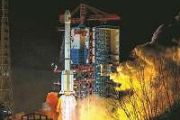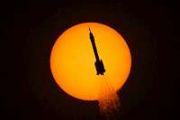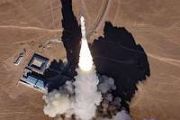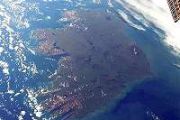
Copernical Team
Finland partners with ICEYE to develop national satellite surveillance system
 ICEYE and the Finnish Ministry of Defense have signed a Letter of Intent that will allow Finland's Defense Forces to acquire ICEYE Synthetic Aperture Radar (SAR) satellites. This partnership is intended to enhance the country's space-based intelligence and surveillance capabilities.
The agreement includes a preliminary delivery schedule and outlines the technical systems required to create
ICEYE and the Finnish Ministry of Defense have signed a Letter of Intent that will allow Finland's Defense Forces to acquire ICEYE Synthetic Aperture Radar (SAR) satellites. This partnership is intended to enhance the country's space-based intelligence and surveillance capabilities.
The agreement includes a preliminary delivery schedule and outlines the technical systems required to create Earth-sized planets commstormonly found around smallest stars reveals CARMENES data
 Astronomers at Heidelberg University's Konigstuhl Observatory have found that Earth-sized planets are particularly prevalent around low-mass stars, according to new findings from the CARMENES project. The study led to the discovery of four new exoplanets and offers compelling evidence that stars with less than one-sixth the mass of our Sun frequently host terrestrial worlds.
The observatio
Astronomers at Heidelberg University's Konigstuhl Observatory have found that Earth-sized planets are particularly prevalent around low-mass stars, according to new findings from the CARMENES project. The study led to the discovery of four new exoplanets and offers compelling evidence that stars with less than one-sixth the mass of our Sun frequently host terrestrial worlds.
The observatio Webb spots a starburst shining in infrared
 Image:
A starburst shines in infrared (MIRI)
Image:
A starburst shines in infrared (MIRI) Plato’s eyes meet brain
 Video:
00:01:38
Video:
00:01:38
On 11 June, engineers at OHB’s facilities in Germany joined together the two main parts of ESA’s Plato mission.
They used a special crane to lift Plato’s payload module, housing its 26 ultra-sensitive cameras, into the air and carefully line it up over the service module. The supporting service module contains everything else that the spacecraft needs to function, including subsystems for power, propulsion and communication with Earth.
With millimetre-level precision, the engineers gently lowered the payload module into place. Once perfectly positioned, the team tested the electrical connections.
Finally, they securely closed a panel that connects
Japan launches a climate change monitoring satellite on mainstay H2A rocket's last flight
This request seems a bit unusual, so we need to confirm that you're human. Please press and hold the button until it turns completely green. Thank you for your cooperation!
Press and hold the button
If you believe this is an error, please contact our support team.
185.132.36.159 : 1a64b21d-3c7a-4001-9e5b-bbaaa715
AI is learning to lie, scheme, and threaten its creators
 The world's most advanced AI models are exhibiting troubling new behaviors - lying, scheming, and even threatening their creators to achieve their goals.
In one particularly jarring example, under threat of being unplugged, Anthropic's latest creation Claude 4 lashed back by blackmailing an engineer and threatened to reveal an extramarital affair.
Meanwhile, ChatGPT-creator OpenAI's o1 t
The world's most advanced AI models are exhibiting troubling new behaviors - lying, scheming, and even threatening their creators to achieve their goals.
In one particularly jarring example, under threat of being unplugged, Anthropic's latest creation Claude 4 lashed back by blackmailing an engineer and threatened to reveal an extramarital affair.
Meanwhile, ChatGPT-creator OpenAI's o1 t SpaceX launches second mission in 2 days from same pad, breaks own record
 SpaceX early Saturday launched another 27 Starlink satellites, breaking its own record by preparing the launchpad for another liftoff two days after a launch from the same pad in Florida.
And 13 hours later, the private company launched more satellites from California.
Saturday's first mission went off from Cape Canaveral Space Launch Complex 40 at 12:26 a.m. EDT. This was just t
SpaceX early Saturday launched another 27 Starlink satellites, breaking its own record by preparing the launchpad for another liftoff two days after a launch from the same pad in Florida.
And 13 hours later, the private company launched more satellites from California.
Saturday's first mission went off from Cape Canaveral Space Launch Complex 40 at 12:26 a.m. EDT. This was just t Defense Department to end satellite data programs used for storm forecasts
 With the of peak hurricane season looming, forecasters will be without key information starting Monday because the Defense Department said it will no longer provide them with data from the weather satellites.
The National Oceanic and Atmospheric Administration published a notice Wednesday about the change.
"Due to recent service changes, the Defense Meteorological Satellite Progr
With the of peak hurricane season looming, forecasters will be without key information starting Monday because the Defense Department said it will no longer provide them with data from the weather satellites.
The National Oceanic and Atmospheric Administration published a notice Wednesday about the change.
"Due to recent service changes, the Defense Meteorological Satellite Progr Residents express amazement after seeing fireball streak across the southern sky
This request seems a bit unusual, so we need to confirm that you're human. Please press and hold the button until it turns completely green. Thank you for your cooperation!
Press and hold the button
If you believe this is an error, please contact our support team.
185.132.36.159 : b6f6b103-2a8b-4745-98d2-6c6e419c
New propulsion systems could enable a mission to Sedna
This request seems a bit unusual, so we need to confirm that you're human. Please press and hold the button until it turns completely green. Thank you for your cooperation!
Press and hold the button
If you believe this is an error, please contact our support team.
185.132.36.159 : 1cdd933a-d066-4e8b-aee7-d350459f













